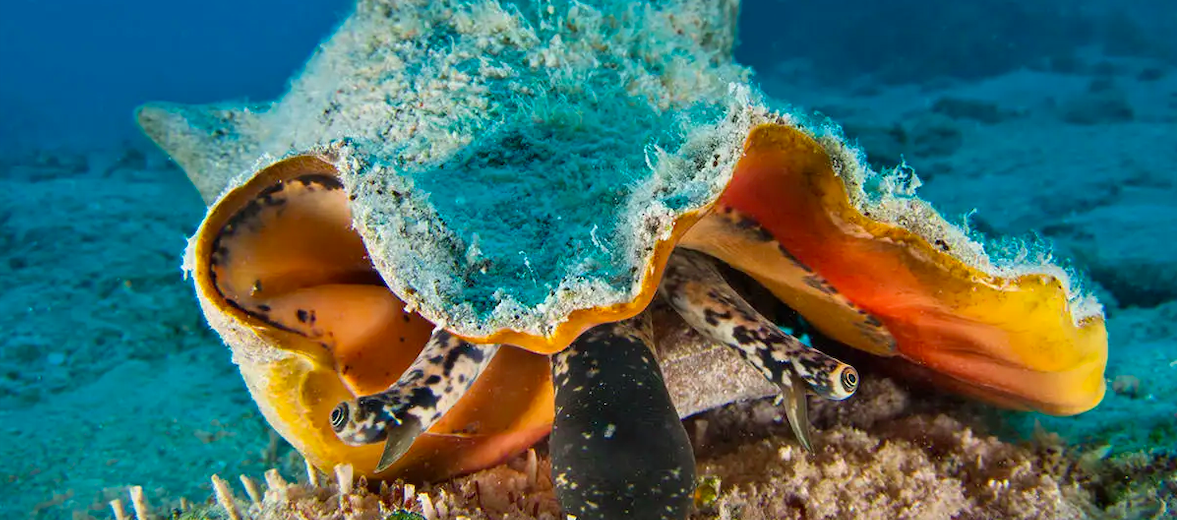
Found in the Caribbean Sea and surrounding waters, the queen conch is a fascinating site to behold. These sea snails are among the largest known; with the giant whelk, from Australia, being number 1. These critters can be found in coral reef habitats, sea grass beds, and sand flats, in shallower water. Due to their impressive appearance, these mollusks have been hunted by humans for centuries. These mollusks have been used as a musical instrument and for food since the Upper Paleolithic period. Their numbers remain stable, but uncertain. They currently aren’t evaluated by the IUCN.
First the Stats…
Scientific name: Lobatus gigas
Weight: Up to 5 lbs.
Length: Up to 12 inches
Lifespan: Up to 30 years
Now on to the Facts!
1.) Queen conchs are herbivores (eat plant matter) that graze on sea algae and other marine plant life.
2.) Loggerhead turtles, nurse sharks, eagle rays, other predatory snail species, blue crabs, spiny lobsters, and other crustaceans all prey on conchs.
3.) After a few years of growth, the queen conch’s shell no longer grows in size, but rather in thickness.
4.) Since commercial and recreational fishing was banned in the 1980’s, it is now illegal to take queen conchs in the state of Florida.
5.) In India the conch has religious importance in the Buddhist and Hindu faiths. They have also been used as a war trumpet and is still used in Hindi rituals to this day.
But wait, there’s more on the queen conch!
6.) Polynesian and Melanesian cultures refer to the conch as Triton’s trumpet.
7.) During mating season, thousands of conchs can gather to reproduce.
Did you know…?
Queen conchs produce brown, orange, white, and even pink pearls.
8.) Female queen conchs lay hundreds of thousands of eggs that drift in the ocean current, till they hatch and the hatchlings lay to rest in a suitable spot.
9.) In the first year of their life, juvenile conchs will bury in the sand during the day and emerge at night to feed.
10.) Nearly 80% of legal internationally traded conch is eaten here in the United States.
Now a Short Queen Conch Video!
Be sure to share & comment below! Also, check out the Critter Science YouTube channel. Videos added frequently!
Want to suggest a critter for me to write about? Let me know here.




Leave a Reply